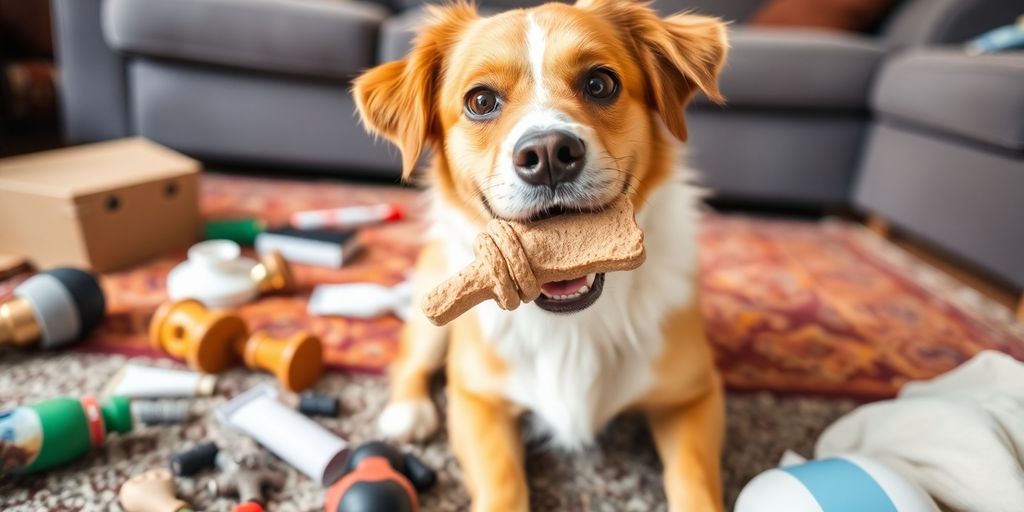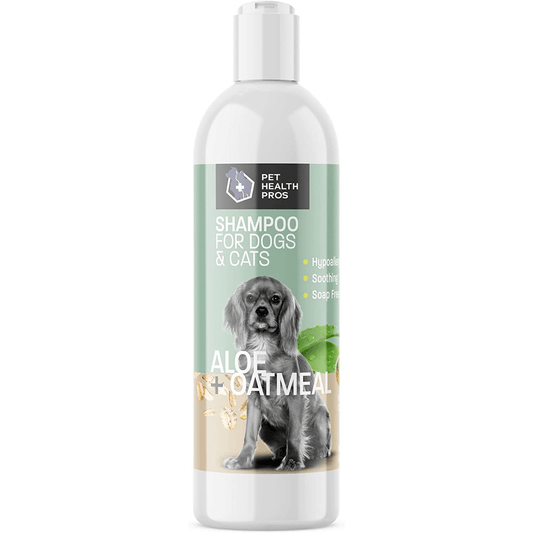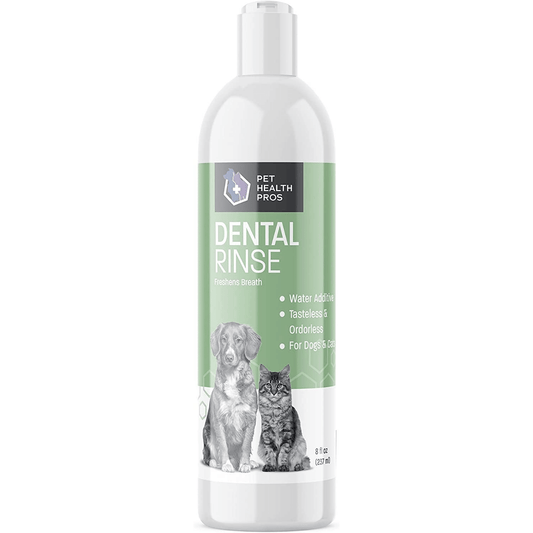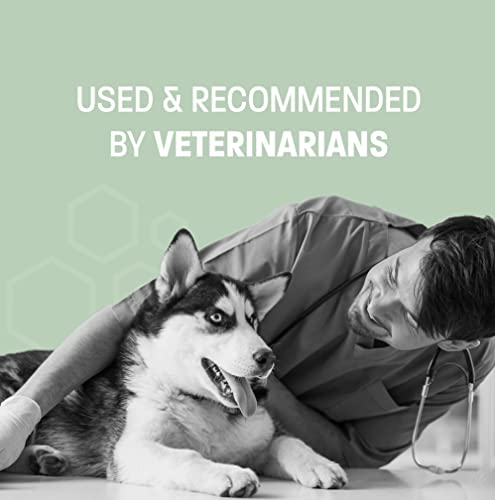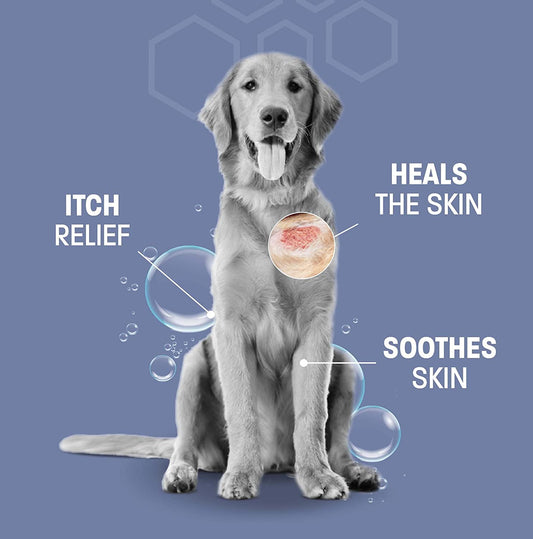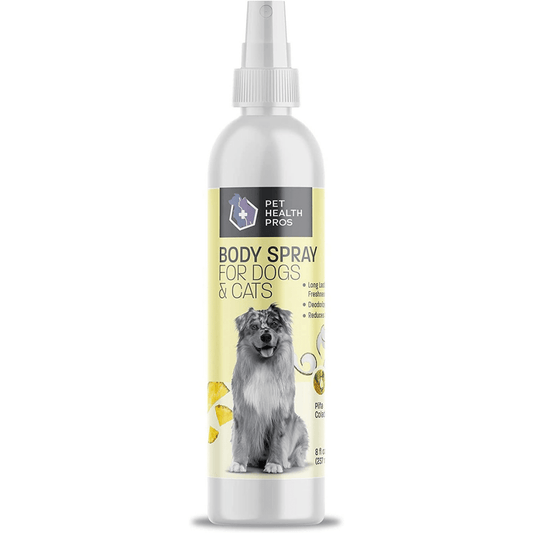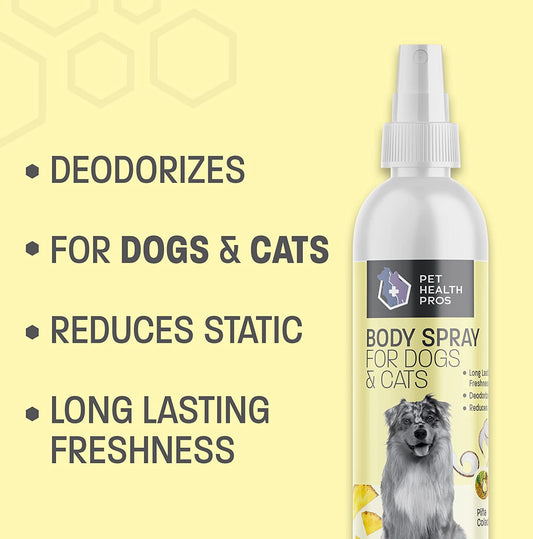So, you’ve got a dog that loves to chew on everything in sight? Trust me, you’re not alone. Whether it’s your favorite shoes, the TV remote, or even the couch cushions, dogs can be notorious for turning household items into their personal chew toys. But don’t worry, there are plenty of ways to keep your belongings safe and teach your furry friend some new habits. Let’s dive into some tips and tricks to help you manage your dog’s chewing behavior.
Key Takeaways
- Understanding why dogs chew is the first step in managing the habit.
- Identifying what triggers your dog's chewing can help prevent it.
- Implementing deterrents and training can redirect your dog's chewing urges.
- Creating a chew-proof environment can save your belongings.
- Consistency and patience are key in changing your dog's chewing behavior.
Understanding Why Dogs Chew
Natural Instincts and Behavior
Dogs have a natural urge to chew. It's just part of who they are. From the time they're puppies, chewing is a way for them to explore the world. It's like how babies put everything in their mouths. Chewing helps dogs learn about their surroundings. Plus, it feels good on their gums. Chewing is a natural behavior that helps dogs relieve stress and anxiety.
Teething and Oral Health
When puppies are teething, they chew a lot to ease the discomfort of new teeth coming in. It's similar to when babies teethe. Chewing helps massage their gums and can reduce the pain. Even adult dogs chew to keep their teeth clean and strong. It's like their version of brushing. Providing the right chew toys can help maintain their oral health.
Boredom and Anxiety
Dogs often chew when they're bored or feeling anxious. If they're left alone too long or don't get enough exercise, they might chew to pass the time. Chewing can also be a sign of anxiety. Dogs might chew when they're nervous or stressed. If your dog is chewing out of boredom, consider increasing their playtime or providing more stimulating toys. For anxiety, calming treats or supplements might help.
Dogs chew for various reasons including exploration, teething, boredom or stress, attention-seeking behavior, and nutritional deficiencies. Understanding these reasons can help you address the problem effectively.
If you're dealing with a chewing problem, it's important to figure out why your dog is chewing. Once you know the reason, you can find the right solution. Whether it's providing more exercise, offering chew toys, or using calming products, there are ways to manage your dog's chewing habits effectively. For more insights on why dogs chew, check out this resource.
Identifying Common Chewing Triggers
Understanding what makes dogs chew on things they shouldn't can be a lifesaver for your favorite shoes or that expensive couch. Recognizing these triggers can help you manage and reduce unwanted chewing behavior.
Household Items at Risk
Dogs, especially puppies, are naturally curious and love to explore with their mouths. This means everything from shoes to remote controls can be at risk. Some common household items that often fall victim to chewing include:
- Shoes and slippers
- Furniture legs
- Electrical cords
To protect these items, consider using a dog no chew spray as a deterrent. It's a simple solution that, when combined with other techniques, can be quite effective.
Signs of Stress-Induced Chewing
Chewing isn't always about curiosity or teething. Sometimes, it's a sign of stress or anxiety. Dogs might chew more when left alone for long periods or during stressful situations like thunderstorms. Look for these signs to identify stress-induced chewing:
- Excessive drooling
- Frequent yawning
- Pacing back and forth
Environmental Factors
The environment your dog lives in plays a big role in their chewing habits. If a dog is bored or doesn't get enough physical or mental stimulation, they might take out their energy on your belongings. Consider these environmental factors:
- Lack of toys or chewable items
- Insufficient exercise
- Unstructured daily routine
"Creating a stimulating environment with plenty of exercise and mental challenges can significantly reduce unwanted chewing."
Implementing Effective Dog Chewing Deterrents
Using Taste Deterrents
One of the most straightforward ways to prevent your dog from gnawing on your favorite shoes is by using taste deterrents. These products are usually sprays or gels that you apply to items you want to protect. They taste bad to dogs, discouraging them from chewing. It's essential to choose a deterrent that is safe for your dog and any surfaces you apply it to. Some popular flavors include bitter apple and citrus. Always test a small area first to ensure it doesn't damage the material.
Training Techniques
Training your dog can be a game-changer in managing chewing behavior. Start by teaching basic commands like "leave it" or "no." Reward your dog with treats or praise when they obey. Consistency is key here. You might need to repeat commands several times before they stick. If you're struggling, consider reaching out to a professional trainer for guidance.
Providing Chew Alternatives
Dogs chew to relieve stress or boredom, so giving them appropriate chew toys can be very effective. Make sure the toys are durable and safe, as well as suitable for your dog's size. Rotate toys every few days to keep them interesting. Options like rubber bones or rope toys are great for keeping your dog occupied. For personalized advice on suitable chew toys, you might consider using Pet Genius, an AI-powered pet health assistant, which offers tailored recommendations based on your pet’s needs.
Creating a Chew-Proof Environment
Dog-Proofing Your Home
To keep your dog from chewing up everything in sight, start by dog-proofing your home. It's like baby-proofing, but for your furry friend. Get down on their level and look for anything they might find interesting to gnaw on. This includes wires, shoes, and even furniture legs. Use covers for electrical cords and keep shoes in a closed closet.
Safe Storage Solutions
Next, think about where you store things. Items like cleaning supplies, food, and small objects should be kept out of reach. Use cabinets with childproof locks if necessary. For those items that can't be put away, consider using deterrent sprays that make them taste bad to dogs.
Supervision and Management
Finally, nothing beats good old-fashioned supervision. Whenever possible, keep an eye on your pup, especially when they're in a new environment. If you can't watch them, consider using a crate or a playpen to keep them in a safe area. Remember, consistent training is key to managing their behavior effectively. For more on this, check out consistent training methods for managing chewing.
Choosing the Right Chew Toys
Materials and Durability
Selecting the right material for your dog's chew toys is crucial. You want something that can withstand a good gnawing session. Firm rubber toys, especially hollow ones that can hold treats, are a great choice. They're tough and can handle a lot of chewing without breaking apart. Plus, they offer the added bonus of keeping your dog entertained by hiding treats inside.
Size and Safety Considerations
When picking a chew toy, size matters. A toy that's too small can be a choking hazard, while one that's too big might not be engaging. Always choose a toy that's appropriate for your dog's size and chewing strength. It's also important to regularly inspect toys for wear and tear, replacing them as needed to prevent any accidental ingestion of broken pieces.
Interactive and Engaging Options
Dogs love toys that challenge them and keep their minds active. Interactive toys that dispense treats or make noises can be especially engaging. These toys not only satisfy your dog's chewing instinct but also help reduce boredom by providing mental stimulation. Consider toys that can be filled with treats or those that require your dog to solve a puzzle to get a reward.
Remember, the right chew toy can make a big difference in keeping your dog happy and your belongings safe. It's about finding that balance between fun and functionality.
Addressing Underlying Behavioral Issues
Consulting a Professional Trainer
If your dog's chewing habits persist despite your best efforts, it might be time to consult a professional trainer. These experts can provide tailored advice and strategies that fit your dog's specific needs. A trainer can help identify the root causes of the behavior and suggest effective interventions. Sometimes, an outside perspective is what you need to tackle persistent issues.
Behavioral Modification Strategies
Behavioral modification involves changing the dog's habits through positive reinforcement and consistent training. Start by rewarding your dog for good behavior and redirecting them when they begin to chew on inappropriate items. This approach not only discourages unwanted behavior but also strengthens the bond between you and your pet. Here are some steps to consider:
- Identify the triggers that lead to chewing.
- Use positive reinforcement to reward non-chewing behavior.
- Gradually expose your dog to these triggers in a controlled manner.
Understanding Canine Psychology
Understanding the psychology behind your dog's chewing can be incredibly helpful. Dogs often chew due to anxiety, boredom, or even as a way to explore their environment. By recognizing these motivations, you can better address the underlying issues. Consider providing more mental stimulation and exercise to reduce boredom-related chewing.
It's important to remember that patience and consistency are key when addressing behavioral issues. Change won't happen overnight, but with time and effort, you can help your dog develop healthier habits.
For a practical solution, consider an alcohol-free formula designed to prevent pets from licking and chewing. It offers a longer-lasting effect compared to alcohol-based alternatives, making it a suitable choice for managing your dog's chewing habits.
Maintaining Consistency and Patience
Setting Realistic Expectations
Training a dog to stop chewing on everything in sight isn't going to happen overnight. It's a process that requires time and patience. Understanding that progress may be slow but steady is key. Set small, achievable goals for your dog and celebrate the little victories.
Reinforcing Positive Behavior
When your dog chooses a suitable chew toy instead of your favorite pair of shoes, reward them! Positive reinforcement is a powerful tool. Use treats, praise, or playtime to encourage good behavior. Consistently rewarding your dog will help them learn what is expected.
Tracking Progress and Adjustments
Keep track of your dog's progress. Make a simple chart to note down instances of inappropriate chewing and successful redirections. This can help you see patterns and make necessary adjustments to your approach. If you notice your dog is consistently chewing on furniture, consider using a no chew spray to deter them.
Patience is your best friend when training your dog. Consistency in your approach, along with understanding and love, will guide you and your furry friend to success.
Staying consistent and patient is key when caring for your pet. It might take time to see results, but don't give up! Keep trying and remember that every little effort counts. For more tips and products to help your furry friend, visit our website today!
Conclusion
In the end, keeping your dog from chewing on everything in sight is all about understanding their needs and giving them the right outlets. Whether it's using deterrent sprays, providing chew toys, or just spending more time with them, each step helps. Remember, patience is key. Dogs don't change overnight, but with consistency and love, you'll see progress. So, hang in there and keep trying different things until you find what works for your furry friend. Your shoes and furniture will thank you!
Frequently Asked Questions
Why do dogs chew on things?
Dogs chew for various reasons like teething, exploring their world, or simply because they're bored. Chewing helps keep their teeth clean and jaws strong.
How can I stop my dog from chewing my shoes?
To stop your dog from chewing on shoes, keep them out of reach, provide chew toys, and use taste deterrents. Consistent training also helps redirect their chewing habits.
Are there safe chew toys for small dogs?
Yes, there are many chew toys specifically designed for small dogs. Look for toys made of durable materials and the right size to prevent choking.
What are taste deterrents, and do they work?
Taste deterrents are sprays or substances that taste bad to dogs. They can be effective in discouraging dogs from chewing on furniture or other items.
Can anxiety cause my dog to chew more?
Yes, anxiety can lead to increased chewing as dogs use it as a coping mechanism. Providing comfort, exercise, and mental stimulation can help reduce anxiety-related chewing.
When should I consult a professional trainer for my dog's chewing?
If your dog's chewing is destructive or persistent despite trying different methods, it might be time to consult a professional trainer for personalized advice.

